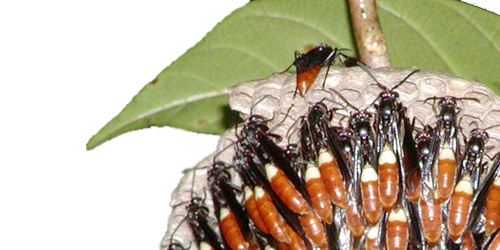In an earlier post I discussed cytomegalovirus (CMV) primarily in relation to its impact on the immunosuppressed—people with AIDS and those of undergoing a stem cell transplant, for example. As a prelude to that discussion, I mentioned that CMV causes mononucleosis. This piqued a reader’s interest:
. . .[I] found it interesting that CMV was related to mono—I’ve had mono, though apparently tested negative twice before positive, but am CMV negative—thankfully!
Presumably, the test for mono the reader mentions was a test for Epstein-Barr Virus, and not CMV. Epstein-Barr Virus (EBV) is another herpes virus that is closely related to CMV, and EBV causes a disease named infectious mononucleosis. CMV causes a disease very similar to mono, and many authorities call that disease infectious mononucleosis. The Centers for Disease Control says the disease caused by CMV is a “mononucleosis-like illness,” whereas the National Institutes of Health states flatly that both EBV and CMV cause mono. When I took microbiology, I apparently learned virology from the NIH school of thought. But it seems more authorities discuss EBV in relation to mono, perhaps because EBV is more likely to cause disease at initial infection (even though many show no symptoms), whereas CMV usually causes no or very mild symptoms in people when they catch it. But both are attributed with causing a disease of the same name. So why the hell is that?
First, it’s important to note that these two viruses are quite closely related—on the evolutionary tree of life, I mean. And so EBV and CMV share essentially all of their genes, with some minor variations (minor for sure when compared to the total genetic diversity of life, or even that among viruses). Because of this, it is no surprise that they cause similar disease.
Second, it’s also important to keep in mind that viral nomenclature is a complete mess. The international rules of nomenclature that have been well-established in zoology and botany for nearly a hundred years (but deriving from rules that are centuries old) are simply not in place for viruses. The best recent example of this is the HIVs. When Montagnier in France first isolated a virus he suspected to cause the plague of immunodeficiency that was killing off mainly gay men, he named it LAV (for Lymphadenopathy Associated Virus). Then Gallo in the USA named it HTLV-III (for Human T-Lymphotropic Virus III)—and that name is now used for a completely different virus. The virus that causes what would be named AIDS was also called ARV (Adenopathy Related Virus) for a time. Ultimately, yet another name was established by international convention (sort of): HIV. But now we know that the thing we call HIV is in fact at least two distinct groups of viruses that entered the human population via separate events. What a shambles.
I only point this out because this confusion about viral nomenclature spills over into disease nomenclature. Lots of named diseases—”the flu,” “the cold,” “AIDS”—are in fact each caused by many different, often closely related but nonetheless distinct species. And this unfortunate practice is not restricted to viruses: Human “malaria” is caused by one of four quite distinct microorganisms, and the characteristics of the diseases they cause are just as distinct. This is all to say that the tiny creatures that cause disease evolve just like the bigger creatures they live in. Species split, become isolated, acquire mutations independently, get different, and ultimately become two species. Although the new species did “get different,” they also share almost all of their traits by inheritance. Whatever characteristics the initial, ancestral species had, the two new descendant species will very likely share most of those same characteristics. In other words, close relatives are a lot alike because they come from common stock—something we all know from our own families. And this is why two differently named viruses can cause the same named disease (even though, in a perfect world, virologists would stop this nonsense).
So the reader is right: One can have a diagnosis of mono without CMV, and it’s CMV—not EBV—that is so problematic for those with trashed immune systems. All important points of clarification for those who might be facing a stem cell transplant.























[...] There’s mono, and then there’s mono [...]
Then it really IS possible that the “mono” I came down with in 9th grade wasn’t the scandalous (by 1960′s standards) “kissing disease”?! If only Mom were still here to hear this!
Actually, you don’t get off that easily. Both of these viruses are transmitted the same way. And don’t pretend you weren’t kissing in the ninth grade.
Just wanted to let u know I am still reading and enjoying your blog. You strength, stamina, and fight do nothing less than inspire me! (esp. on those days I’m feeling sorry for myself)I am so proud to call You my brother. Tell Greg I said hi and I love u both!